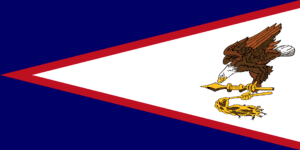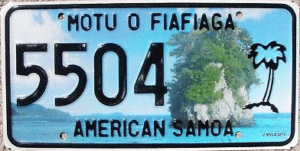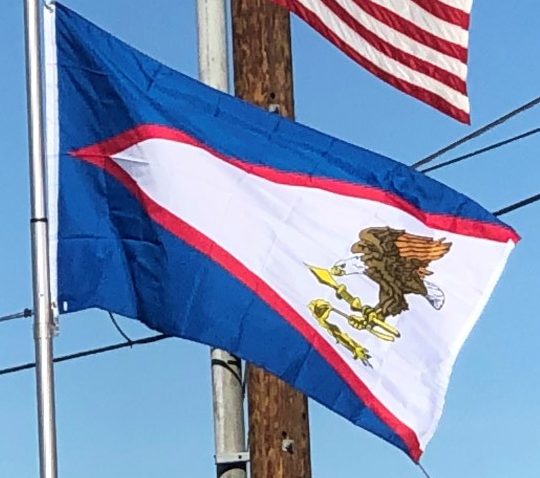
Before the first Europeans set foot on the islands in the 18th century, Samoa did not use any flags. They first utilized flags during the 1800s, although it is unclear which ones were flown due to partial documentation. The islands were contested by Germany, the United Kingdom and the United States at the turn of the century; the three countries resolved the dispute by dividing Samoa amongst themselves during the Tripartite Convention in 1899. As a result of an agreement with the high chiefs of the island of Tutuila, the United States took control over easternmost Samoa on April 17, 1900, and raised their flag that same day. It went on to be the only official flag of American Samoa until 1960.
In the mid-20th century, Samoans began to take a more active role in the local government. Consequently, deliberations began over a new territorial flag and the Samoans were invited to propose ideas. Local government leaders and the U.S. Army Institute of Heraldry then designed the flag while incorporating these ideas into it. The flag was officially adopted April 17, 1960, sixty years to the day the U.S. first raised the American flag over Samoa.
The colors and symbols of the flag carry cultural, political, and regional meanings. The red, white and blue represent the colors traditionally utilized by both the United States and Samoa. The bald eagle represents the U.S. and features on the flag, although it does not live in American Samoa. It clutches two Samoan symbols, alluding to America’s guardianship over American Samoa, as well as evoking the Great Seal of the United States. The symbols are a uatogi (a war club, epitomizing the government’s power) and a fue (a fly-whisk, representing the wisdom of traditional Samoan leaders).
Territorial Motto:
The Samoan motto Samoa Muamua Le Atua is translated “Samoa, God is First”.

